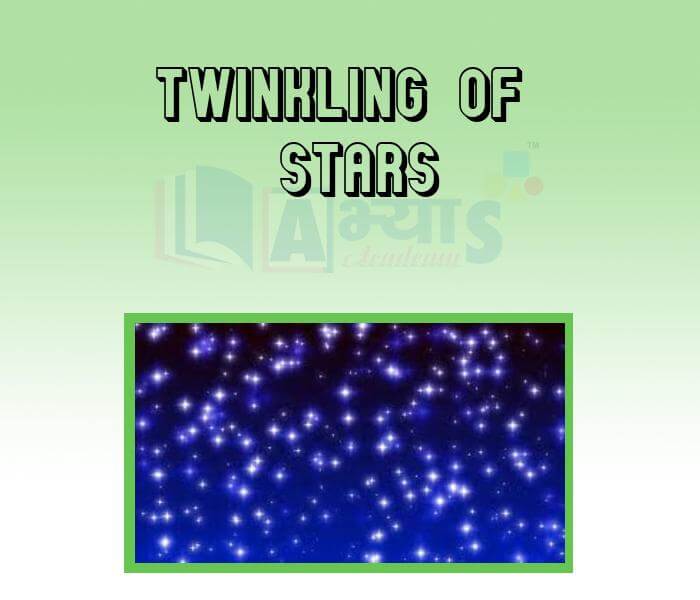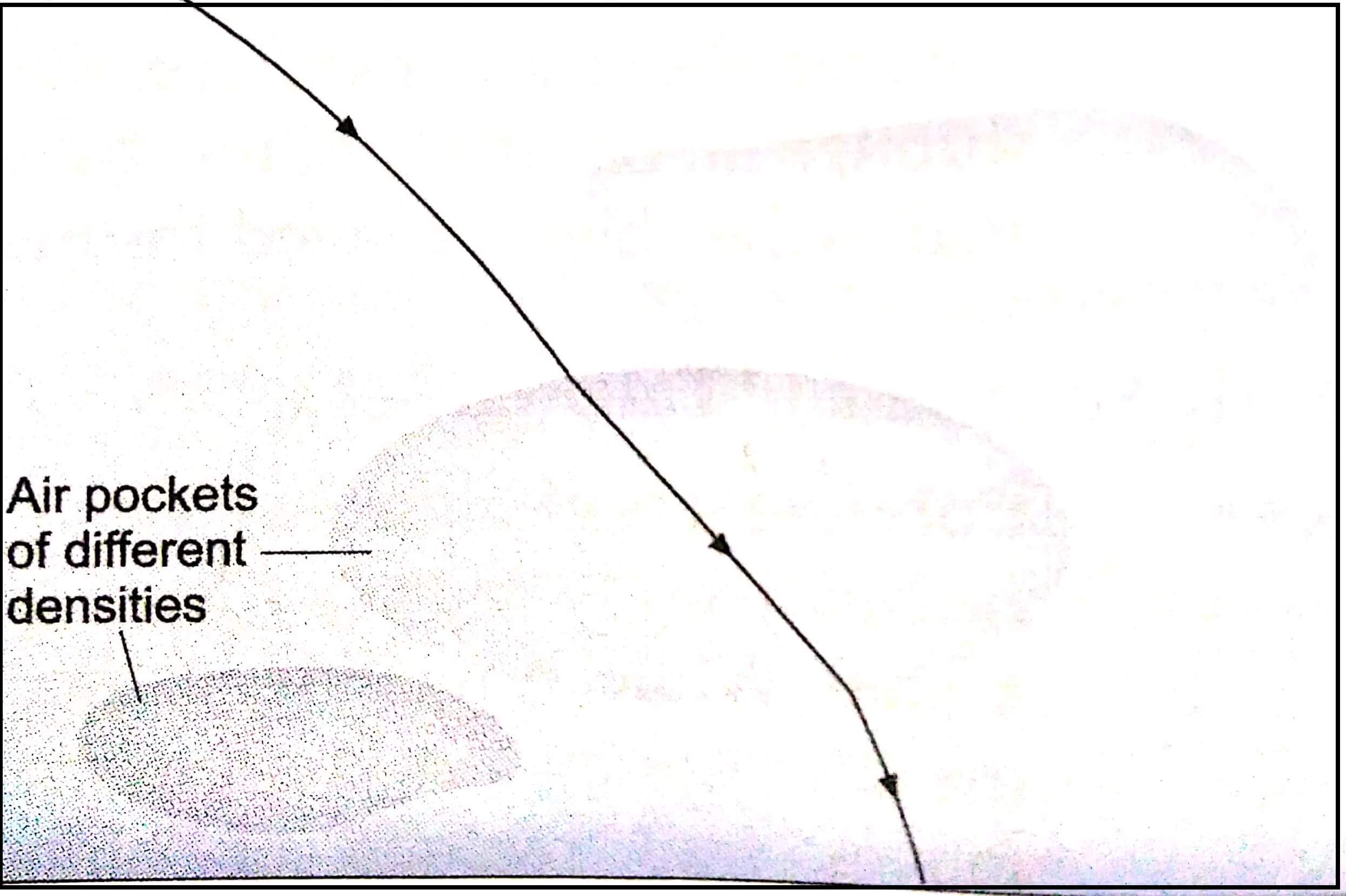Twinkling of stars










Twinkling of Stars
Twinkling of Stars
Twinkle, twinkle little star' may have been the first rhyme you learnt, but may still be unaware of what makes stars twinkle. When we look at stars, quite often they do not appear to shine steadily. They disappear for a fraction of a second before reappearing (the intensity of light from them fluctuates), or their positions seem to shift slightly in random directions. We call this the twinkling of stars. Let us see why this happens.
 |
Since the temperature of air and its humidity are not the same everywhere in the atmosphere the refractive index of air varies between different masses (or pockets) of air, even at the same altitude. Thus, there exist air pockets whose refractive index is different from that of the air surrounding it. When a ray of light passes through such a pocket of air, it bends due to refraction as in Figure. Light from a star may pass through one or more air pockets before reaching the eye. But the air pockets keep moving So, the direction of the ray reaching the eye keeps changing, causing the image of the star to shift in random directions or even disappear for an instant. The amount of star light reaching the eye also keeps changing due to the shift in the direction of the light. So, the brightness of the star seems to change. The stars near the horizon twinkle more than those that are overhead. This is because ligh from a star near the horizon has to cover much more distance in the atmosphere than that from stars which are overhead. Therefore, it has greater chances of encountering air pockets whose density is different from the surrounding air. |
Why planets do not twinkle Planets do not seem to twinkle like stars, although light coming from them also passes through the air pockets in the atmosphere. This is because stars appear a point objects to us due to their enormous distance from the earth. On the other hand, planets a comparatively nearer, and therefore, for us they are more like extended object. Different parts of the planet form an extended image at the eye, and we are unable to detect the random shifts in the smaller portions of this image.
Which of the following statement justifies the fact that the Planets do not seem to twinkle like stars. 1. Planets are nearer. that stars. 2. For us they are more like extended object. 3. Different parts of the planet form an extended image at the eye, 4. We are unable to detect the random shifts in the smaller portions of this image. | |||
| Right Option : D | |||
| View Explanation | |||
Refraction of light is the cause for __________________. | |||
| Right Option : C | |||
| View Explanation | |||
The stars are said to twinkle because __________________ | |||
| Right Option : D | |||
| View Explanation | |||
Students / Parents Reviews [10]
Abhyas is a complete education Institute. Here extreme care is taken by teacher with the help of regular exam. Extra classes also conducted by the institute, if the student is weak.

Om Umang
10thIt has a great methodology. Students here can get analysis to their test quickly.We can learn easily through PPTs and the testing methods are good. We know that where we have to practice

Barkha Arora
10thI have spent a wonderful time in Abhyas academy. It has made my reasoning more apt, English more stronger and Maths an interesting subject for me. It has given me a habbit of self studying

Yatharthi Sharma
10thA marvelous experience with Abhyas. I am glad to share that my ward has achieved more than enough at the Ambala ABHYAS centre. Years have passed on and more and more he has gained. May the centre flourish and develop day by day by the grace of God.

Archit Segal
7thIt was a good experience with Abhyas Academy. I even faced problems in starting but slowly and steadily overcomed. Especially reasoning classes helped me a lot.

Cheshta
10thIt was good as the experience because as we had come here we had been improved in a such envirnment created here.Extra is taught which is beneficial for future.

Eshan Arora
8thAbhyas Methodology is very good. It is based on according to student and each child manages accordingly to its properly. Methodology has improved the abilities of students to shine them in future.

Manish Kumar
10thOne of the best institutes to develope a child interest in studies.Provides SST and English knowledge also unlike other institutes. Teachers are co operative and friendly online tests andPPT develope practical knowledge also.

Aman Kumar Shrivastava
10thAbout Abhyas metholodology the teachers are very nice and hardworking toward students.The Centre Head Mrs Anu Sethi is also a brilliant teacher.Abhyas has taught me how to overcome problems and has always taken my doubts and suppoeted me.

Shreya Shrivastava
8thMy experience with Abhyas academy is very good. I did not think that my every subject coming here will be so strong. The main thing is that the online tests had made me learn here more things.
